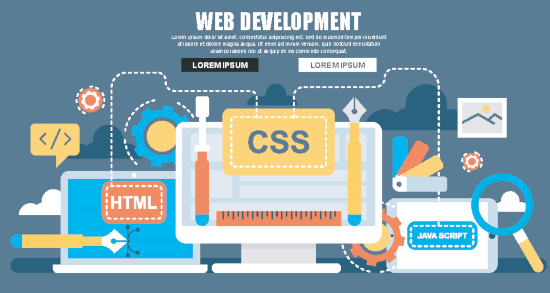Front-end development is a crucial aspect of web development that focuses on the visual and interactive elements of a website. It encompasses everything that users see and interact with directly, from layout and design to navigation and interactivity. This article explores the fundamentals of front-end development, including essential technologies, best practices, and emerging trends.
What is Front-End Development?
Front-end development involves creating the user interface (UI) and user experience (UX) of a website. It is the bridge between the user and the server-side of a web application, ensuring that the content is visually appealing and easy to navigate. Front-end developers utilize various technologies and frameworks to build responsive, engaging websites that function seamlessly across devices.
Key Technologies in Front-End Development
- HTML (Hypertext Markup Language): HTML is the backbone of any web page, providing the structure and content. It uses a series of tags to define elements such as headings, paragraphs, images, and links.
- CSS (Cascading Style Sheets): CSS is responsible for the styling and layout of web pages. It allows developers to control the appearance of elements, including colors, fonts, spacing, and positioning. CSS frameworks like Bootstrap and Tailwind CSS simplify the styling process and ensure responsive design.
- JavaScript: JavaScript is a programming language that adds interactivity and dynamic content to websites. It allows developers to create features like animations, form validation, and real-time updates. Libraries like jQuery and frameworks like React, Angular, and Vue.js enhance JavaScript’s capabilities and streamline development.
- Version Control Systems: Tools like Git help front-end developers manage code changes, collaborate with team members, and track project progress. Version control is essential for maintaining organized and efficient workflows.
Best Practices for Front-End Development
- Responsive Design: Ensuring that websites function well on various devices is critical. Implementing responsive design techniques, such as fluid grids and media queries, allows developers to create layouts that adapt to different screen sizes.
- Semantic HTML: Using semantic HTML improves accessibility and search engine optimization (SEO). By employing appropriate tags (e.g., <header>, <footer>, <article>), developers can create more meaningful and structured content.
- Performance Optimization: Optimizing web performance is vital for user experience. This includes minimizing file sizes, using lazy loading for images, and leveraging browser caching. Tools like Google PageSpeed Insights can help identify areas for improvement.
- Cross-Browser Compatibility: Ensuring that a website functions correctly across different browsers is essential. Developers should test their sites in various browsers (Chrome, Firefox, Safari, etc.) to identify and resolve compatibility issues.
- Accessibility: Making websites accessible to users with disabilities is crucial. Implementing best practices, such as using alt text for images and ensuring keyboard navigability, helps create an inclusive web experience.
Emerging Trends in Front-End Development
- Jamstack Architecture: Jamstack (JavaScript, APIs, Markup) is an architecture that decouples the front end from the back end. This approach enhances performance and scalability, allowing developers to build fast, secure sites that leverage APIs for dynamic content.
- Single Page Applications (SPAs): SPAs load a single HTML page and dynamically update content as users interact with the application. This results in faster load times and a more fluid user experience. Frameworks like React and Angular are commonly used to build SPAs.
- Progressive Web Apps (PWAs): PWAs combine the best features of web and mobile applications, providing offline functionality and app-like experiences. They are becoming increasingly popular due to their ability to enhance user engagement and retention.
- Component-Based Development: This approach involves breaking down UI elements into reusable components, promoting consistency and efficiency. Libraries like React and Vue.js facilitate component-based development, allowing for modular and maintainable code.
- Motion UI: Incorporating animations and transitions into web design enhances user engagement. Motion UI adds a dynamic element to websites, guiding users and providing feedback during interactions.
Conclusion
Front-end development is a vital component of the web development ecosystem, focusing on creating user-friendly, visually appealing websites. By mastering essential technologies and best practices, front-end developers can deliver engaging experiences that meet users’ needs. As the field continues to evolve with emerging trends, staying updated on the latest advancements will be crucial for success in this dynamic industry.



